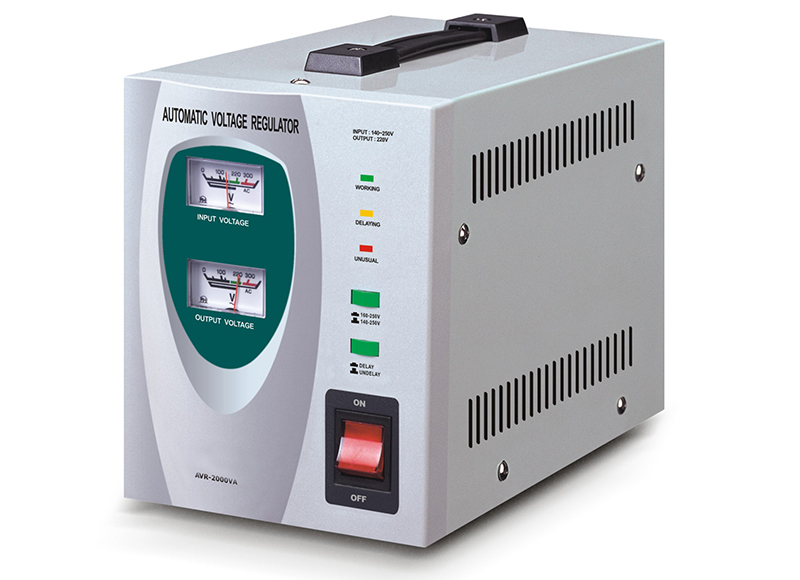The capacity of the voltage stabilizer is expressed in volt-ampere (VA) or kilovolt-ampere (KVA). In addition to the pure resistive load, there are also inductive and capacitive loads in the load. In addition to the active power, there is no Work power. This indicator reflects the ability of AC power supplies with inductive and capacitive loads.
In general AC power supply, the load power factor cosφ is 0.8. When the product is 1KW, the output active power (that is, the capacity of resistive load) is up to 800W. If the product is expressed by 1KW (cosφ is still 0.8), it can be The output active power is 1KW, and the output power S=1000/0.8=1250VA at this time. When the load power factor value is small, it means that the power supply equipment has a strong ability to adapt to reactive loads.
Capacity safety factor

automatic voltage regulator for fridge
AC stabilized power supply is based on the output apparent power (kVA) as the nominal rated capacity, and in general, the load is not purely resistive, that is, the power factor COS¢≠1, the actual active power that the regulator can output kW= Capacity (kVA)×COS¢. Therefore, in the actual selection(Upgraded automatic voltage regulator), the regulated power supply should be reasonably selected according to the specific conditions of the electrical equipment's rated power, power factor and load type, and its output power should be left with a proper margin, especially for the impact load selection margin. To be larger, see the table below for the specific selection safety factor
Load nature Equipment type Safety factor Select stabilized power supply capacity
Pure resistive load Incandescent lamp, resistance wire, electric furnace and other equipment 1.25~1.5 1.25~1.5 times the total load power
Inductive and capacitive load Fluorescent lamps, fans, motors, water pumps, air conditioners, computers, refrigerators, etc. 2 ~ 3 ≥2~3 times the total load power
In the environment of large inductive and capacitive loads (such as motors, computers), the starting current of the load should be considered when selecting the type is particularly large (up to 5-8 times the rated current), so the capacity of the voltage stabilizer should be selected according to the load power 2.5~3 times.
For example, one three-phase motor 2.2kW and one 5.5 kW. When using a voltage stabilizer, the capacity is ≥(2.2kW+5.5 kW)×2.5=19.25 kVA, that is, at least three-phase SJW-20 kVA and above products must be used. Depressor.
Output capacity curve of uncompensated regulated power supply
Auto-coupling regulator (single-phase 0.5kVA~3kVA, 10k horizontal and below, three-phase 9kVA and below) when the input phase voltage is lower than 198V, the output capacity begins to drop; when the input phase voltage is equal to 160V, it drops to 50% of the rated capacity of the regulator. Therefore, at the low end of the power supply voltage, special attention should be paid to reducing the load and derating to avoid overloading and burning the voltage stabilizer;
The auto-coupling regulator can output two voltages of 220V and 110V at the same time. But even when the output is all 110V, the load of the regulator cannot exceed 50% of the rated capacity, otherwise it is overloaded.
The parameters of the AC voltage stabilizer include output power, input frequency, source frequency effect, random deviation (time drift), no-load input power, source power factor (this value is different from the load power factor, the larger the hope, the better, the maximum is 1 ), source current relative harmonic content, audio noise, etc., three-phase AC stabilized power supply, and three-phase output voltage unbalance, etc. For the definition and test methods of these indicators, please refer to relevant standards.